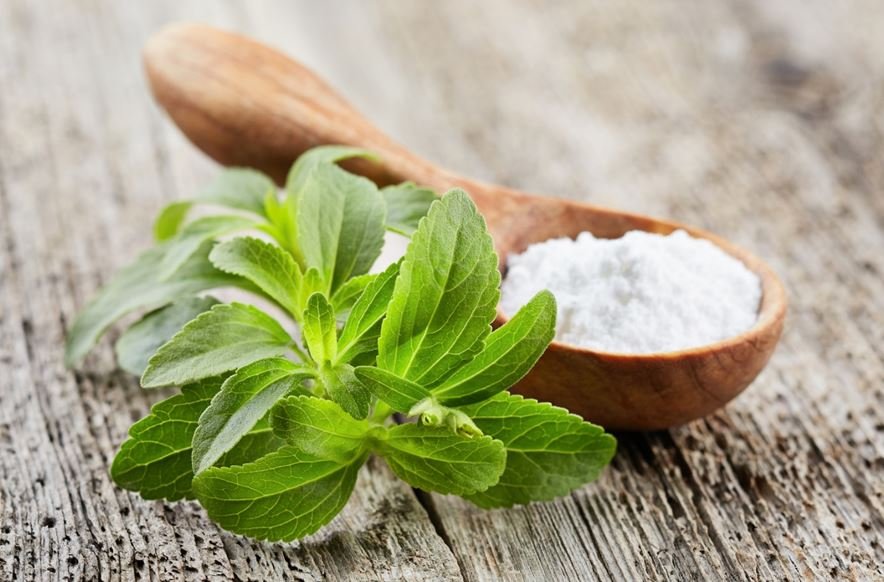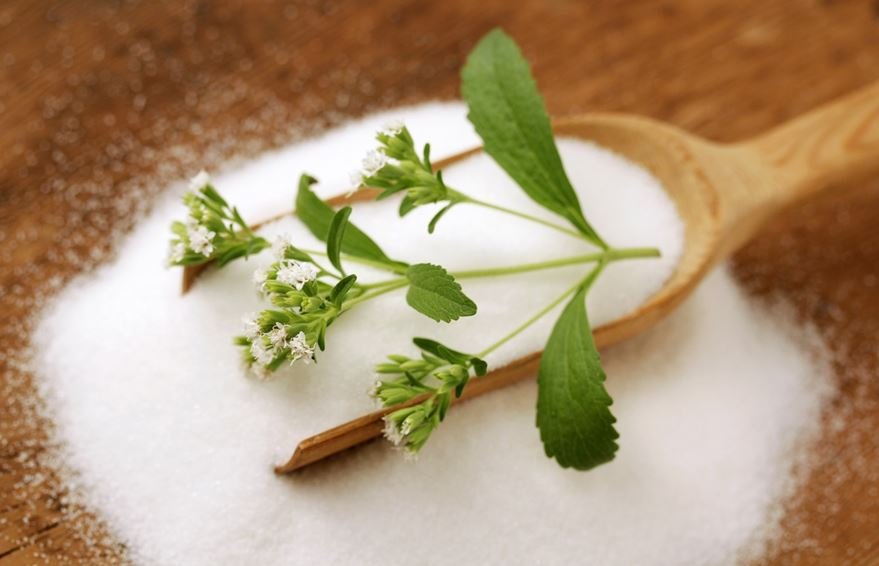Health
Stevia: Unsweetened Truths of the Natural Sweetener

Stevia comes from the plant stevia rebaudiana that is found in Paraguay and Brazil. Since old times in the native culture, the leaves have been used to sweeten tea and beverages and treat blood sugar hikes.
But when sugar, with its easy availability, blew up the market, it replaced the anecdotal use of Stevia, even in the native land. Sugar spikes the blood sugar level gives an instant dopamine high, leaving you to crave more sweetness in your life. With no aftertaste and plenty of uses, sugar had no difficulty playing the naturally occurring stevia leaves out of the game.
But the recent Diet Culture discouraged the use of sugar for its high calories and weight-putting effects. When preached by the influencers, the carbs and calories of sugar became a threat to the body-aware nutritionists. As a result, people began utilizing Stevia once again for its advantage of zero nutrient value.
Stevia became an instant star of the show with zero calories and zero carbs to show on its composition chart.
What makes Stevia extracts so sweet?

Stevia comes in a variety of forms: pure extract, powdered form, and granules. It is a replacement for complex carbs that are sugar. Stevia contains steviol glycoside compounds in more than 40 forms that make it a natural sweetener. It is actually x200 times sweeter than table sugar and is a healthier replacement for sugar as it is proven to be with no carb and calories. The chemical compounds known as steviol glycosides make it taste sweeter and linger longer on the tongue, persisting sweet taste for a longer duration.
The four primary sweeteners present in the leaf are stevioside, Rebaudioside-A, rebaudioside-C, and dulcoside-A. Following are the two of the most important of the lot:
- Stevioside: it is 5-10% of the dry weight of the leaves. It is processed to a crystallized powder that is 210 times sweeter than sucrose and is responsible for the lingering sweet taste and the pungency on the taste buds.
- Rebaudioside-A: another primary sweet compound found in stevia leaves that is 240 times sweeter relative to sucrose and is 2-4% of the dry weight of the leaves. It has no pungent flavor at all but a sweet one.
Therefore stevioside is less desirable than Rebaudioside-a, even if stevioside is more abundantly available in the stevia leaf.
Effects of commercial stevia products on prolonged use:

There are some side effects of Stevia that are seldom deterred or even acknowledged by all the health preachers, who teach its advantages to the world.
- Endocrine disruption: steviol glycosides are insulin mimics that influence insulin production and aid people with diabetes. But it also influences the secretion of other hormones in the body.
- Extra progesterone: The endocrine system is responsible for regulating the flow of hormones in the body.Studies have shown that prolonged and large doses of Stevia lead to the dysfunction of the estrogen and progesterone-producing glands and negatively impact the levels of these hormones in the body.It increases the level of progesterone in the body while simultaneously blocking the progesterone receptors. With no negative feedback loop to signal the glands to stop producing progesterone, the glands keep delivering the hormone that leads to irregular periods, fertility issues, and pregnancy is threatened.
Due to the mentioned side effect, Stevia is traditionally used to control pregnancy in its native place. - The body reacts to the sweet taste on the tongue by anticipating a glucose rush and responds by secreting insulin to lower the blood sugar. But Stevia, with zero carb and zero calories, does not fulfill the glucose requirement that arises. So the system pulls the stored sugar from the muscles as an emergency response to the low blood sugar and glucose rush. But when this cycle is repeated more times, your adrenals are exhausted.
- Extra progesterone: The endocrine system is responsible for regulating the flow of hormones in the body.Studies have shown that prolonged and large doses of Stevia lead to the dysfunction of the estrogen and progesterone-producing glands and negatively impact the levels of these hormones in the body.It increases the level of progesterone in the body while simultaneously blocking the progesterone receptors. With no negative feedback loop to signal the glands to stop producing progesterone, the glands keep delivering the hormone that leads to irregular periods, fertility issues, and pregnancy is threatened.
- Stevia does not affect the digestive system, but the end product, made by adding sugar alcohols and syrups to stabilize the compound, causes a set of gastrointestinal symptoms. These additives cause issues like bloating, nausea, vomiting, and cramping.
- The digestive system works in harmony with bacterias that turn our food into blood soluble substances for easier absorption.
- Stevia interacts with this gut microbiome and interrupts/blocks their pathways by interrupting the communication between the microbiota.
- Rebaudioside A, one of the steviol glycosides, is majorly responsible for this particular side effect.
- Stevia is a known diuretic substance that causes the body to expel water, fluids, and salts through urine and sweat: so consuming the sweetener causes more trips to the bathroom than usual.
- Be aware of your allergies when you are on stevia products. The plant stevia belongs to the Asteraceae/Compositae plant family. People sensitive to the ragweed family must think twice before using it daily as their body launches an emergency pollen reaction when Stevia is consumed.
- Stevia widens the blood vessels that in turn lowers the blood pressure. It is therefore of little importance in people with low blood pressure, in which case it can drop the blood pressure to a dangerous low. It might seem beneficial for people with high bp issues. But its leaves are a known vasodilator that can cause swings in blood pressure that is not wanted.
Sneaky ingredients in stevia-based products:
Remember that stevia and stevia leaves are not FDA-approved sweeteners. But the compounds found in the filtered and manufactured stevia sweeteners are the ones that are FDA approved.
- For example, many companies add dextrose or maltodextrin to sweeten the sweetener.
- Truvia adds erythritol, which is supposed to be a naturally occurring substance, but the manufacturers use the chemically engineered element to add while producing stevia products as a “natural” sweetener.
- Now, the commercial company tries to mask the signature bitter taste associated with the stevia leaves by adding powdered or liquid flavors which are not warranted for use.
A good product delivers what is promised to its consumer with 100% transparency. Although Stevia, as an individual plant sweetener, might achieve the aim of adding sweetness without sugar, its manufacturers and commercial products fail to do so. With a complete guide to the side effects to balance the advantages of Stevia listed on the internet, you are armed to make an intelligent choice, depending on your take.
Read more: Healthy Muesli Breakfast Options to Kickstart Your Day
-

 Tech2 months ago
Tech2 months agoIs NippyBox Still Available in 2025?
-

 Dentist2 months ago
Dentist2 months agoWhy You May Need an Emergency Dentist in Rochester Hills
-

 Business2 months ago
Business2 months agoWhy Lifelong Learning is the Key to Staying Competitive in Business
-

 News2 months ago
News2 months agoDelta Flight DL275 Diverted LAX Due to Suspected Technical Issue






